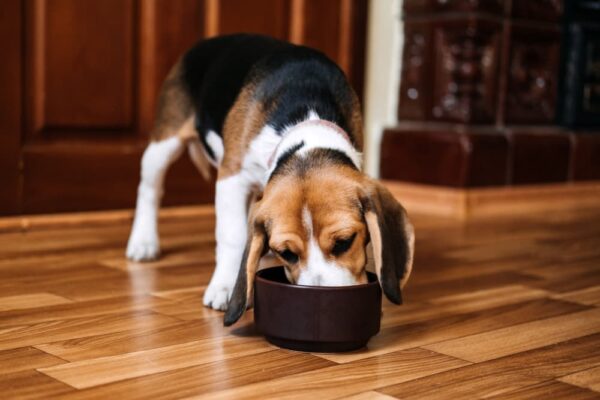Food aggression in dogs is a serious problem that can lead to dangerous situations if not addressed. It’s important to understand the causes of food aggression and how to stop it before it gets out of hand.
Food aggression occurs when a dog feels threatened by another animal or person while they are eating. This can manifest itself in growling, barking, snapping, and even biting. Dogs may also guard their food bowl or try to keep people away from it.
The most common cause of food aggression is a lack of proper socialization with other animals and people when the dog was young. If your dog didn’t have enough positive experiences with other animals and people during their puppyhood, they may become overly protective of their food as an adult.
Another cause of food aggression is resource guarding. This happens when your dog perceives that there isn’t enough food for everyone and so they become possessive over what they have. This can be especially problematic if you have multiple dogs in the same household who are competing for resources.
It’s important to address food aggression as soon as possible before it escalates into something more dangerous. The best way to do this is through positive reinforcement training methods such as clicker training or reward-based training.
When training your dog not to have food aggression, start by teaching them basic obedience commands such as sit, stay, come, down, and leave it. These commands will help you gain control over your dog’s behavior around food and will make it easier for you to redirect them away from aggressive behaviors if needed.
You should also work on desensitizing your dog to being around other animals and people while they eat by gradually introducing them to different scenarios where there are other animals or people present while they eat their meals in peace. This will help them learn that there is no need for them to be aggressive towards others when eating their meals since there is plenty of food available for everyone.
Finally, make sure that you feed your dog separately from any other animals in the house so that they don’t feel like they need to compete for resources with anyone else in the home. You should also provide plenty of mental stimulation throughout the day so that your pup doesn’t become bored and resort back to aggressive behaviors out of frustration or boredom.
By following these tips, you can help reduce or even eliminate any existing food aggression issues with your pup! With patience and consistency on your part, you’ll be able to create a safe environment where everyone can enjoy mealtimes without fear of aggression from your pup!









